
Organized crime is a category of transnational, national, or local group of centralized enterprises run to engage in illegal activity, most commonly for profit. While organized crime is generally thought of as a form of illegal business, some criminal organizations, such as terrorist groups, rebel forces, and separatists, are politically motivated. Many criminal organizations rely on fear or terror to achieve their goals or aims as well as to maintain control within the organization and may adopt tactics commonly used by authoritarian regimes to maintain power. Some forms of organized crime simply exist to cater towards demand of illegal goods in a state or to facilitate trade of goods and services that may have been banned by a state. Sometimes, criminal organizations force people to do business with them, such as when a gang extorts protection money from shopkeepers. Street gangs may often be deemed organized crime groups or, under stricter definitions of organized crime, may become disciplined enough to be considered organized. A criminal organization can also be referred to as an outfit, a gang, crime family, mafia, mob, (crime) ring, or syndicate; the network, subculture, and community of criminals involved in organized crime may be referred to as the underworld or gangland. Sociologists sometimes specifically distinguish a "mafia" as a type of organized crime group that specializes in the supply of extra-legal protection and quasi-law enforcement. Academic studies of the original "Mafia", the Italian Mafia, as well as its American counterpart, generated an economic study of organized crime groups and exerted great influence on studies of the Russian mafia, the Chinese triads, the Hong Kong triads, and the Japanese yakuza.

In criminology, the broken windows theory states that visible signs of crime, antisocial behavior and civil disorder create an urban environment that encourages further crime and disorder, including serious crimes. The theory suggests that policing methods that target minor crimes, such as vandalism, loitering, public drinking and fare evasion, help to create an atmosphere of order and lawfulness.

The Massachusetts State Police (MSP) is an agency of the Commonwealth of Massachusetts' Executive Office of Public Safety and Security, responsible for law enforcement and vehicle regulation across the state. As of 2024, it has 2,500 sworn troopers and 611 civilian support staff for a total of 3,111 personnel, making it the largest law enforcement agency in New England. The MSP is headed by Colonel Geoffrey Noble, the first colonel to not come from State Police ranks.

Crime analysis is a law enforcement function that involves systematic analysis for identifying and analyzing patterns and trends in crime and disorder. Information on patterns can help law enforcement agencies deploy resources in a more effective manner, and assist detectives in identifying and apprehending suspects. Crime analysis also plays a role in devising solutions to crime problems, and formulating crime prevention strategies. Quantitative social science data analysis methods are part of the crime analysis process, though qualitative methods such as examining police report narratives also play a role.
Chicago Alternative Policing Strategy (CAPS) is a community driven policing strategy designed for the Chicago Police Department that aims to bridge the gap between the police force and the citizens of Chicago. CAPS started in 1993 as a pilot program in five of the 25 police districts in Chicago - Englewood, Marquette, Austin, Morgan Park, and Rogers Park - after a realization that the community and police were becoming increasingly isolated from one another throughout Chicago since the early 1960s. The original five districts, characterized by high crime rates and cases of extreme poverty, provided the Chicago Police Department with an initial benchmark from which to determine the program's strengths and weaknesses. By 1995, the Chicago Police Department implemented CAPS across all Chicago neighborhoods with the goal of blending traditional policing strategies with alternative strategies aimed at encouraging community members and police to work together in order to prevent and control crime. The program's motto, "Together We Can," emphasizes the need for increased lines of communication between the community and the police, so that together they could come up with solutions for chronic neighborhood problems.
Operation Ceasefire (also known as the Boston Gun Project and the Boston Miracle) is a problem-oriented policing initiative implemented in 1996 in Boston, Massachusetts. The program was specifically aimed at youth gun violence as a large-scale problem. The plan is based on the work of criminologist David M. Kennedy.
Crime in Chicago has been tracked by the Chicago Police Department's Bureau of Records since the beginning of the 20th century.
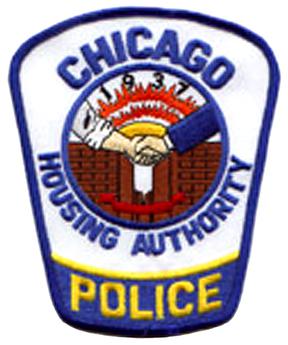
The Chicago Housing Authority Police Department (also known as the CHAPD) was created as a supplement to the Chicago Police Department (CPD), to provide dedicated police services to the residents of one of the nation's most impoverished and crime ridden developments for low-income housing. The CHAPD accomplished their daily goals by utilizing "community oriented policing techniques and aggressive vertical patrol" of all Chicago Housing Authority public housing projects throughout the inner city of Chicago, Illinois and some suburban areas.

The Minneapolis Police Department (MPD) is the primary law enforcement agency in Minneapolis, Minnesota, United States. It is also the largest police department in Minnesota. Formed in 1867, it is the second-oldest police department in Minnesota, after the Saint Paul Police Department that formed in 1854. A short-lived Board of Police Commissioners existed from 1887 to 1890.
The Columbia Police Department (CPD) is the principal law enforcement agency serving the city of Columbia, Missouri, in the United States. It has 187 sworn police officers.
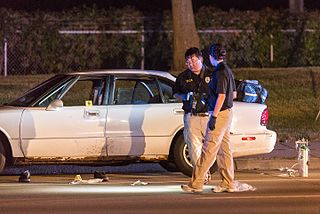
Crime in Minnesota encompasses a wide range of unlawful activities that occur within the state, regulated by both state and federal laws. While crime rates in Minnesota are generally below the national average, certain areas and types of crime have garnered public attention.
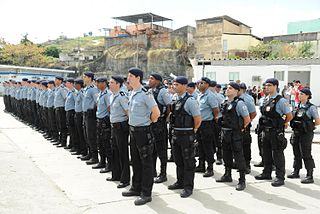
The Pacifying Police Unit, abbreviated UPP, is a law enforcement and social services program pioneered in the state of Rio de Janeiro, Brazil, which aims to reclaim territories, most commonly favelas, controlled by gangs of drug dealers. The program was created and implemented by State Public Security Secretary José Mariano Beltrame, with the backing of Rio Governor Sérgio Cabral. The stated goal of Rio's government is to install 40 UPPs by 2014. By May 2013, 231 favelas had come under the UPP umbrella. The UPP program scored initial success expelling gangs, and won broad praise. But the expensive initiative expanded too far, too fast into dozens of favelas as state finances cratered, causing a devastating backslide that enabled gangs to recover some of their lost grip.
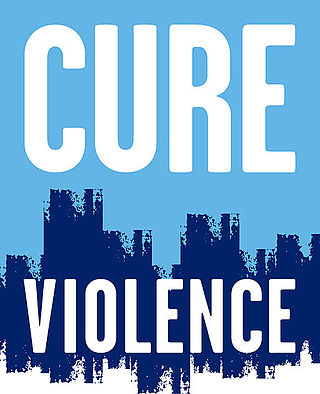
Cure Violence is a public health approach to violence prevention and reduction. It aims to stop the spread of violence in communities by using the methods and strategies associated with epidemic disease control: detecting and interrupting conflicts, identifying and treating the highest risk individuals, and changing social norms.
Community policing is a philosophy and organizational strategy whereby law enforcement cooperates with community groups and citizens in producing safety and security. The theory underlying community policing is that it makes citizens more likely to cooperate with police by changing public perceptions of both the intention and capacity of the police. The theory is also that it changes attitudes of police officers and increases accountability.
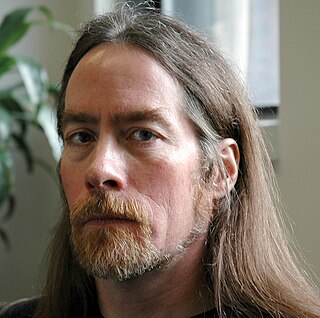
David M. Kennedy is an American criminologist, professor, action researcher, and author specializing in crime prevention among inner city gangs, especially in the prevention of violent acts among street gangs. Kennedy developed the Operation Ceasefire group violence intervention in Boston in the 1990s and the High Point Model drug market intervention in High Point, North Carolina, in 2003, which have proven to reduce violence and eliminate overt drug markets in jurisdictions around the United States. He founded the National Network for Safe Communities in 2009 to support cities using these and related strategies.
In the United States, the war on gangs is a national movement to reduce gang-related activity, gang violence, and gang drug involvement on the local, state, and federal level. The war on gangs is a multi-lateral approach, as federal agencies seek to disrupt the cycle of violence through intervention with state police and social workers.

James Edwin Richards, also known as Jim Richards,, was an American citizen journalist, editor and publisher of Neighborhood News, a weekly e-mail newsletter, that reported on crime in Venice, California. Richards was murdered at his Oakwood neighborhood home, one convicted assailant was sentenced to 16 years in prison, and the anniversary of his death is honored by locals.

Kevin Kit Parker is a lieutenant colonel in the United States Army Reserve and the Tarr Family Professor of Bioengineering and Applied Physics at Harvard University. His research includes cardiac cell biology and tissue engineering, traumatic brain injury, and biological applications of micro- and nanotechnologies. Additional work in his laboratory has included fashion design, marine biology, and the application of counterinsurgency methods to countering transnational organized crime.
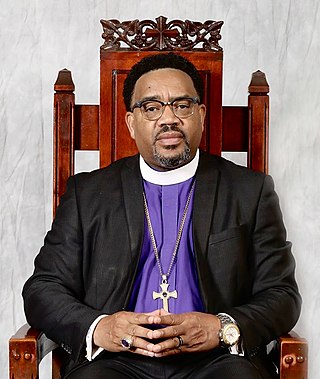
Talbert Wesley Swan II is an American religious leader. He is a prelate in the Church of God in Christ serving as the bishop of the Vermont Ecclesiastical Jurisdiction in the United States. Swan is the fifth leader of the Jurisdiction and oversees COGIC congregations in Vermont, Massachusetts, New Hampshire, Connecticut, and New York. Swan serves the Church of God in Christ as Assistant General Secretary and Director of Social Justice Ministry. Swan is also the National Chaplain of Iota Phi Theta Fraternity, Inc. and the host of a radio talk show, The Spoken Word.

The Springfield Police Department is the law enforcement agency responsible for the city of Springfield, Massachusetts. The department consists of about 500 sworn personnel, approximately 420 patrol officers and 80 supervisors.















